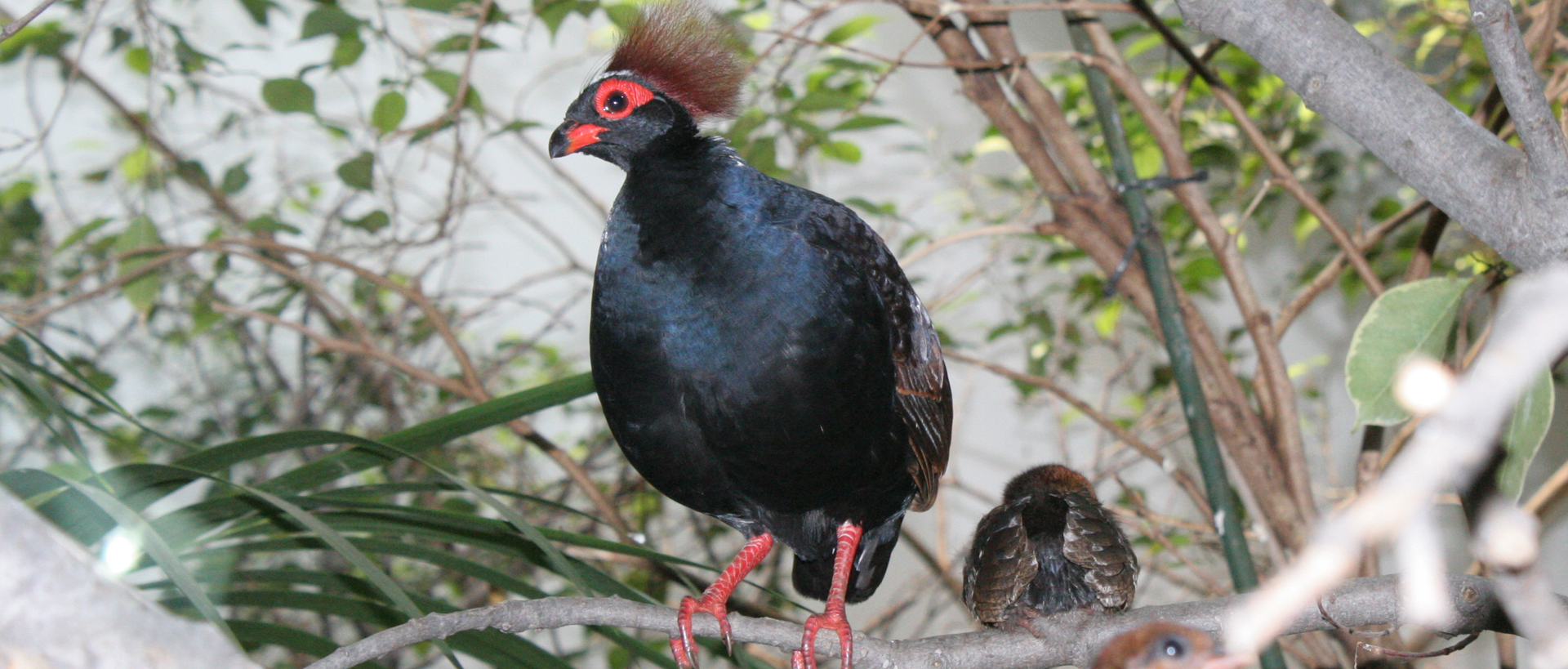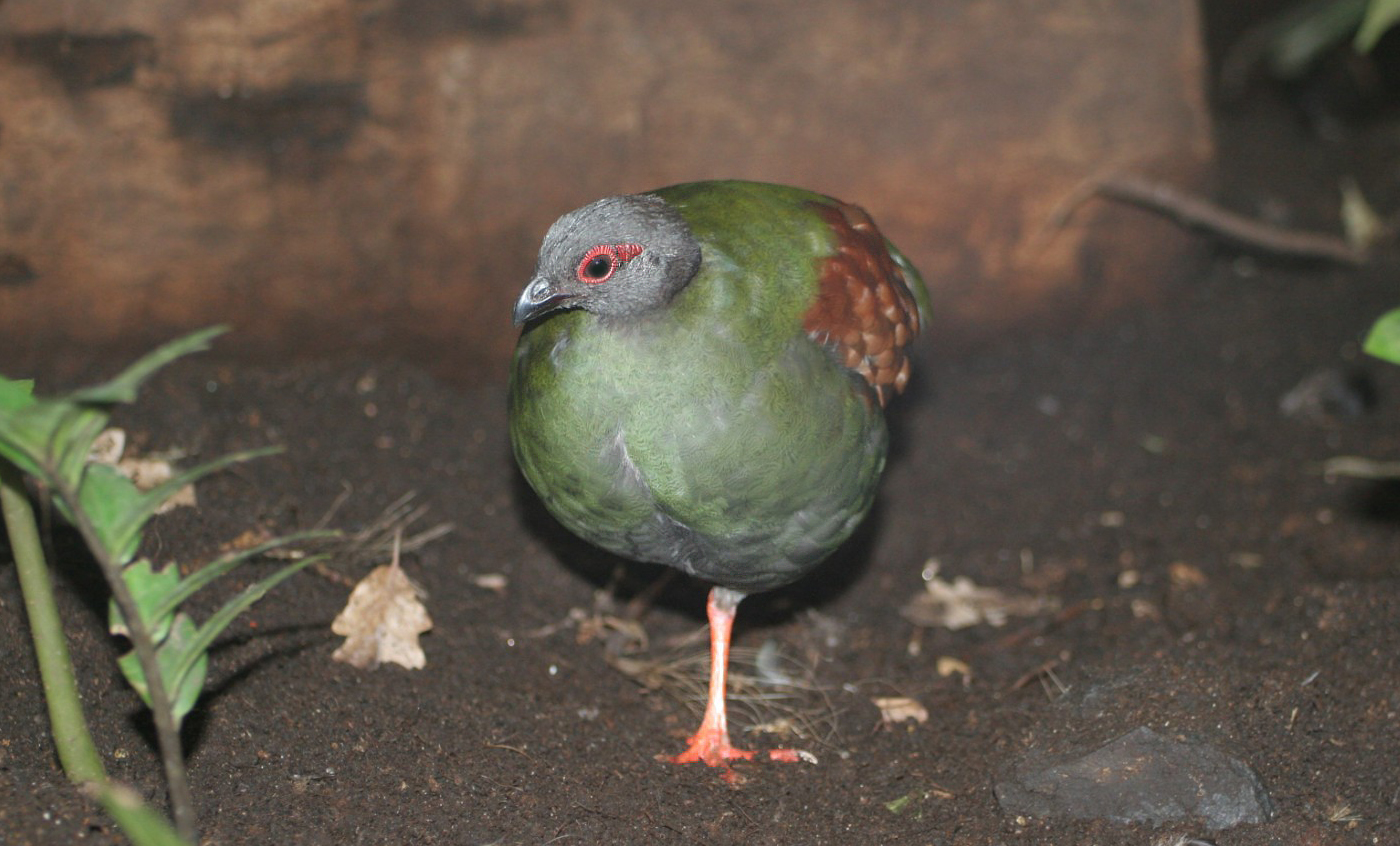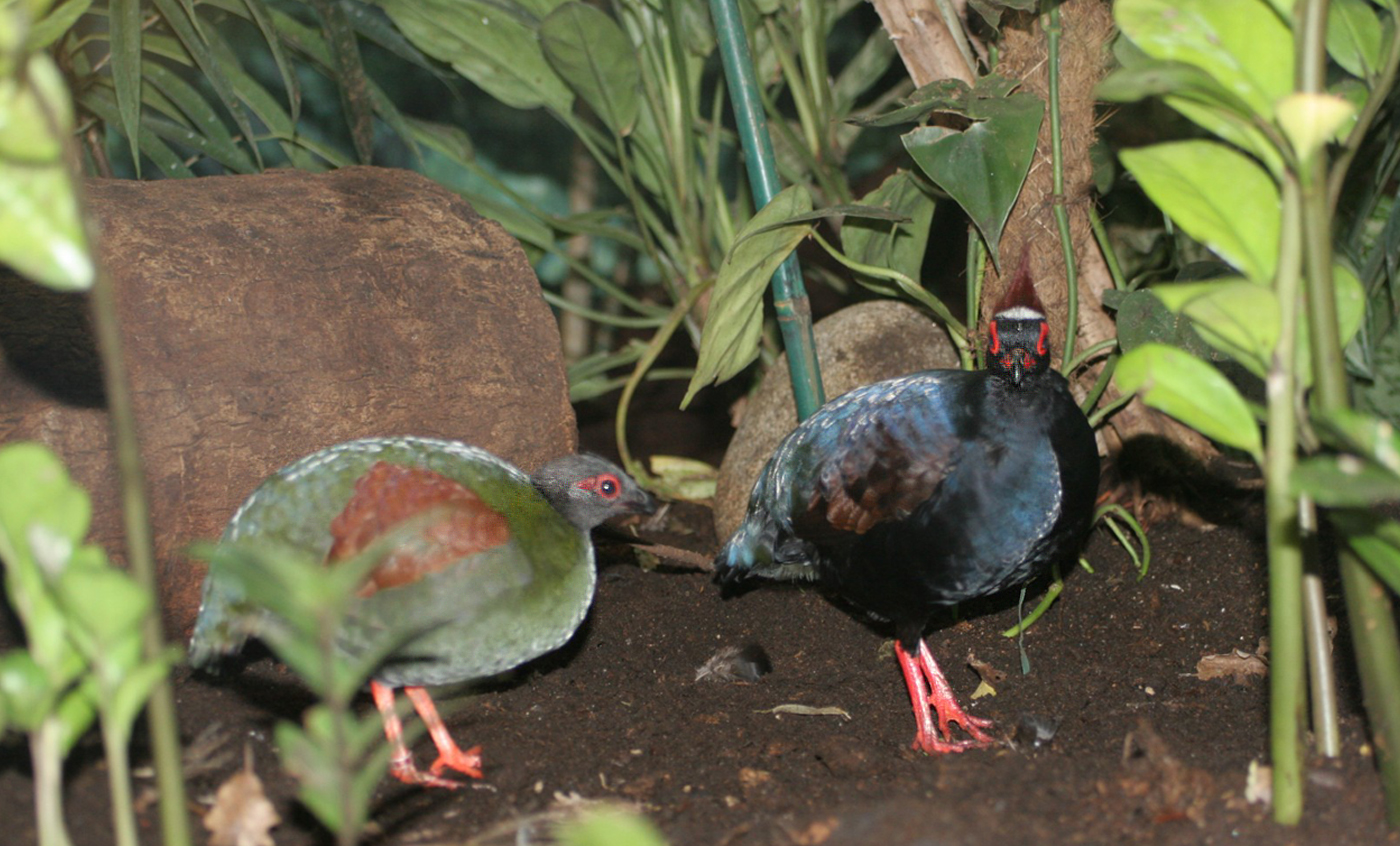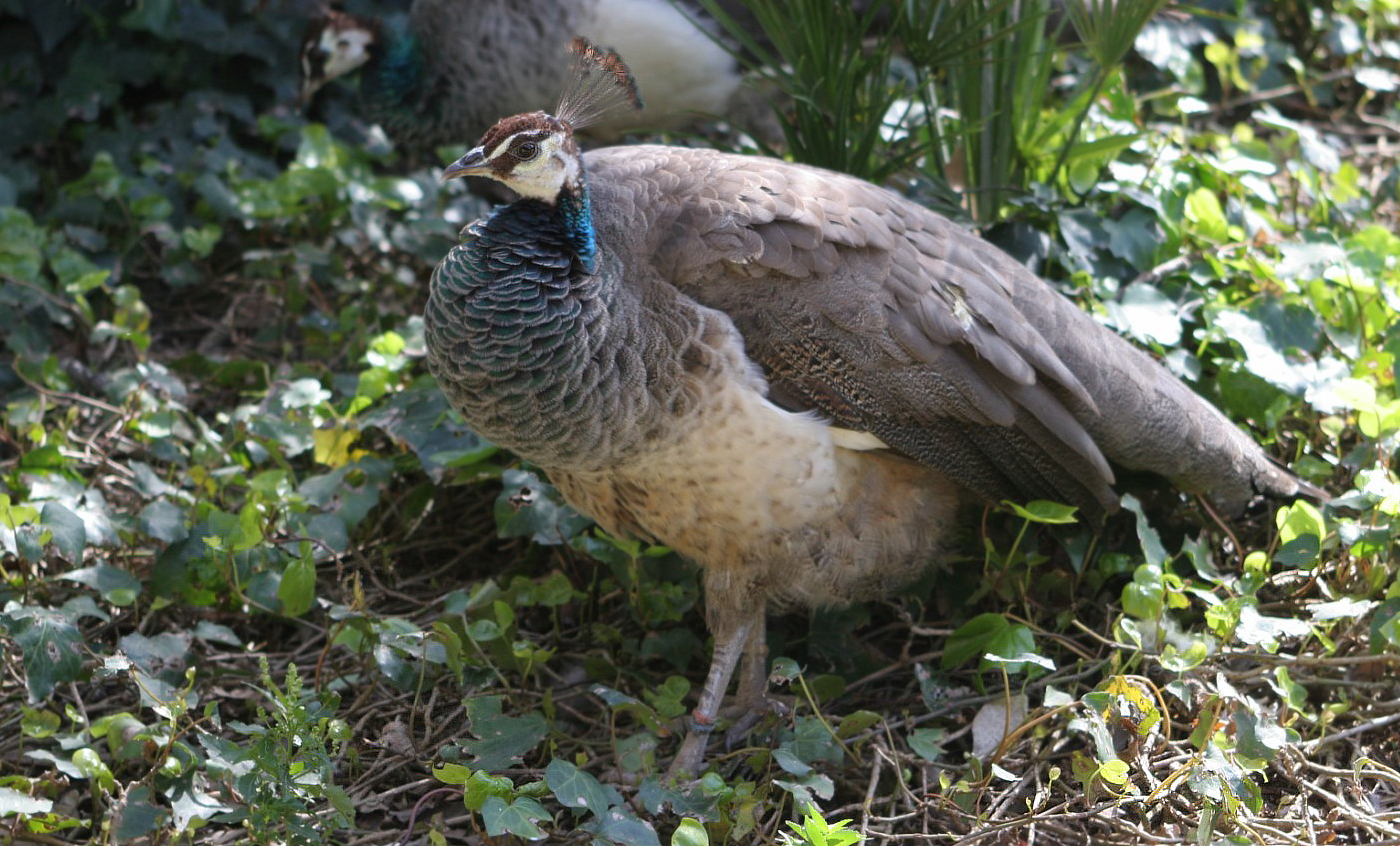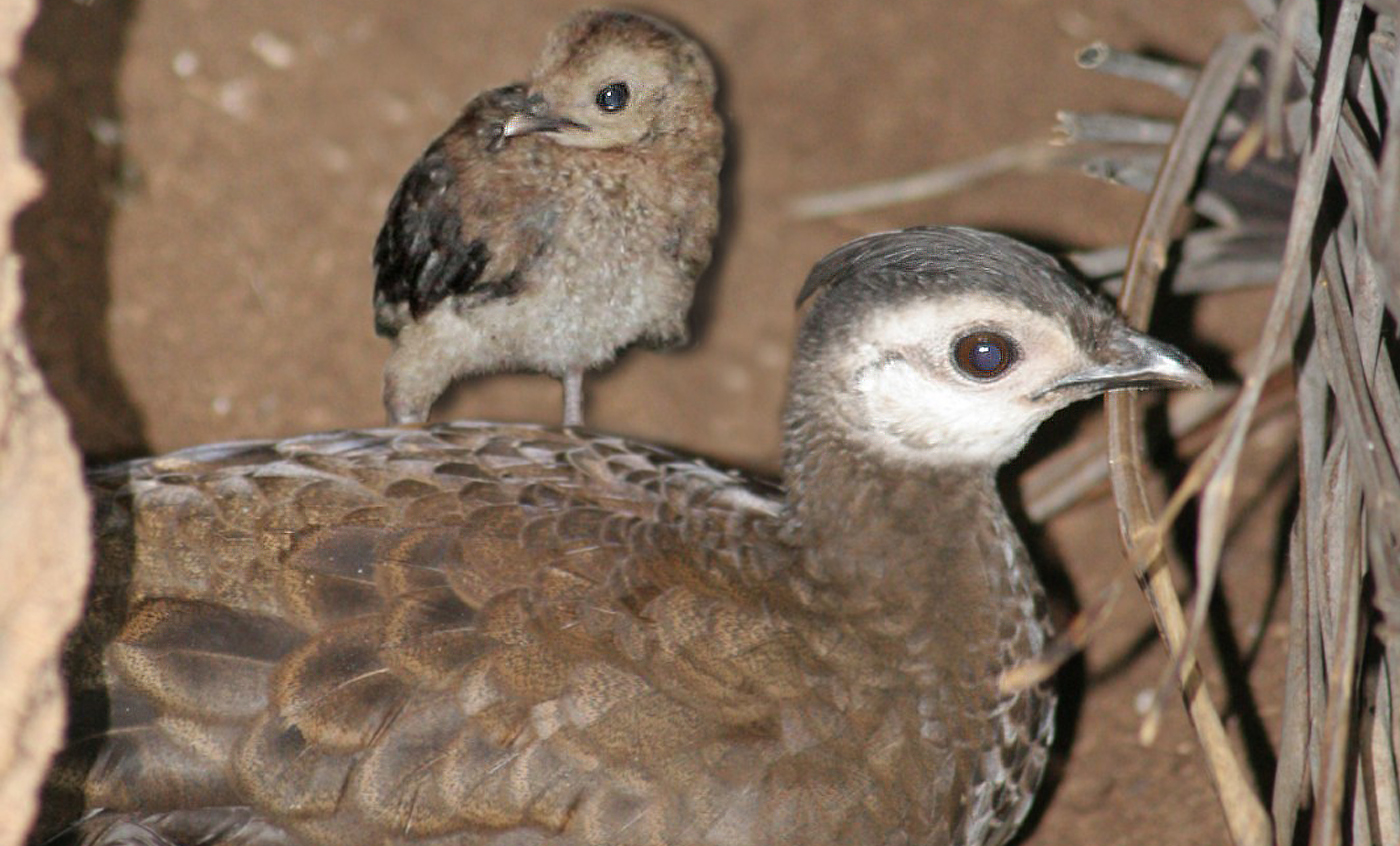Crested partridge
The crested partridge is a small, ground-dwelling bird, related to quail and pheasants, that lives in the jungles and forests of south-west Asia and the islands of Sumatra and Borneo.
It is a solitary bird and an omnivore. It makes its nest in the ground, hidden among the vegetation, where it lays from 5 to 6 eggs which it incubates for 18 to 19 days.
The males and females are very distinct from each other: the colours of the two are very different and the male has a bright red crest.
Natural habit
Southeast Asia and islands of Sumatra and Borneo.
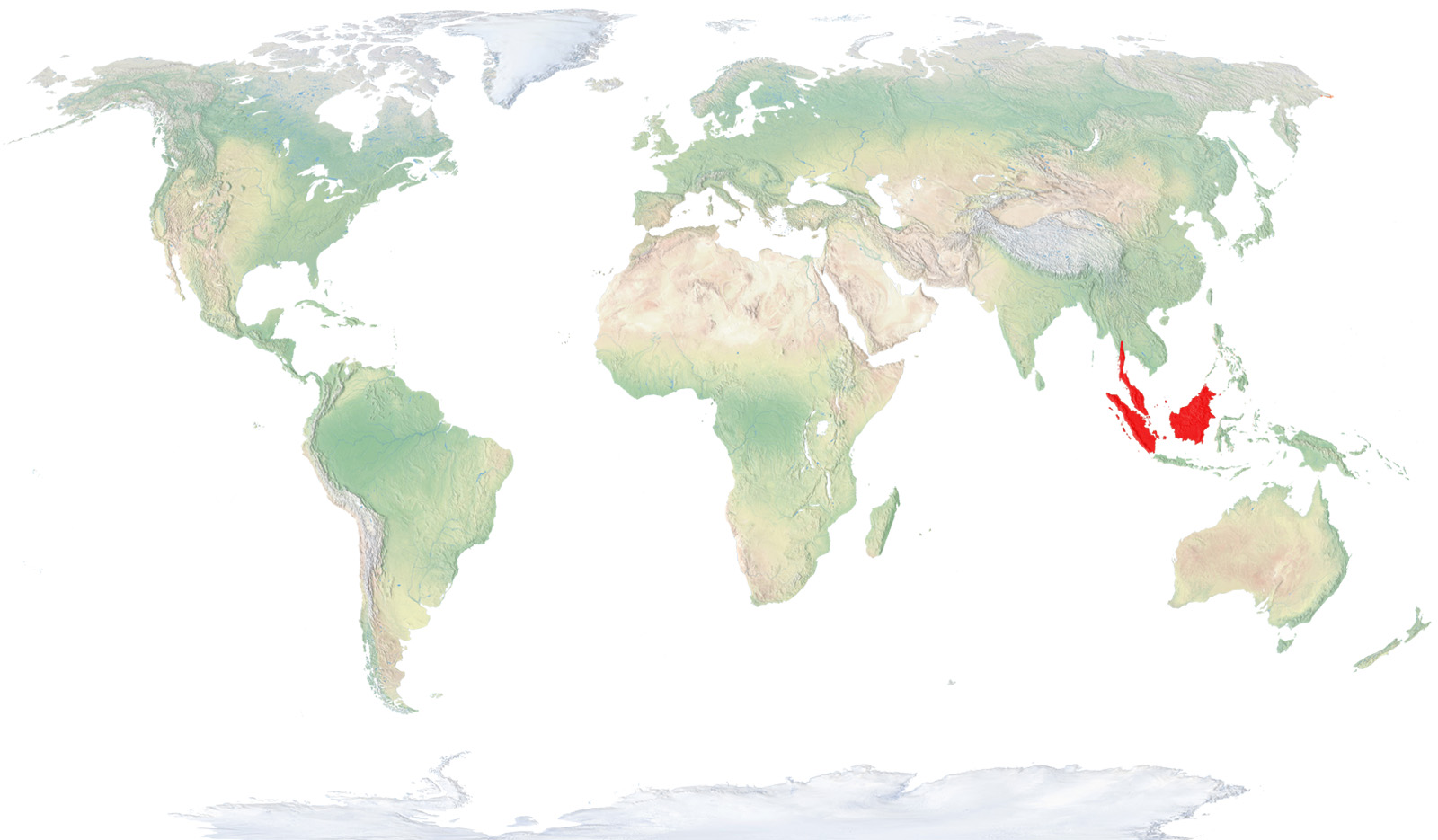
- Distribution / Resident
- Breeding
- Wintering
- Subspecies
Risk level
- Extint
- Extint in the wild
- Critically endangered
- In Danger
- Vulnerable
- Near threatened
- Minor concern
- Insufficient data
- Not evaluated
Taxonomy
Physical characteristics
Biology
Reproduction
Biology
The crested wood partridge is a small bird with terrestrial habits, related to quails, partridges and pheasants. It is a very enigmatic and unsociable bird, some 25 cm long, with clear sexual dimorphism: the colouring of the two genders is very different and the male also has a bright-red crest. Indeed, the male is completely blue and black—although the dorsal and rump have olive tones and the wings are more brownish—while the female has mostly green plumage, except for the wings, brown, and the head, totally grey.
It lives in tropical woods and jungles in Southeast Asia and the islands of Sumatra and Borneo.
Omnivorous, it takes advantage of periods with abundant fruits to feed, while eating insects and seeds during other periods. It sometimes associates with wild boars to eat the remains from the fruits the boar eats.
Crested wood partridges make their nests on the ground, hidden among vegetation, in which they lay five or six eggs. The incubation period is 18 to 19 days and is done completely by the female from beginning to end.
Solitary and resident in their entire area of distribution.
Today, their populations are endangered, primarily due to the deforestation of their jungle habitat. They have not been the object of much conservation in their countries of origin, making their highly vulnerable to all types of destruction of habitat.



